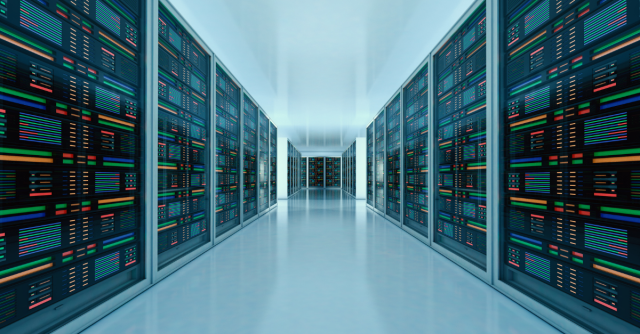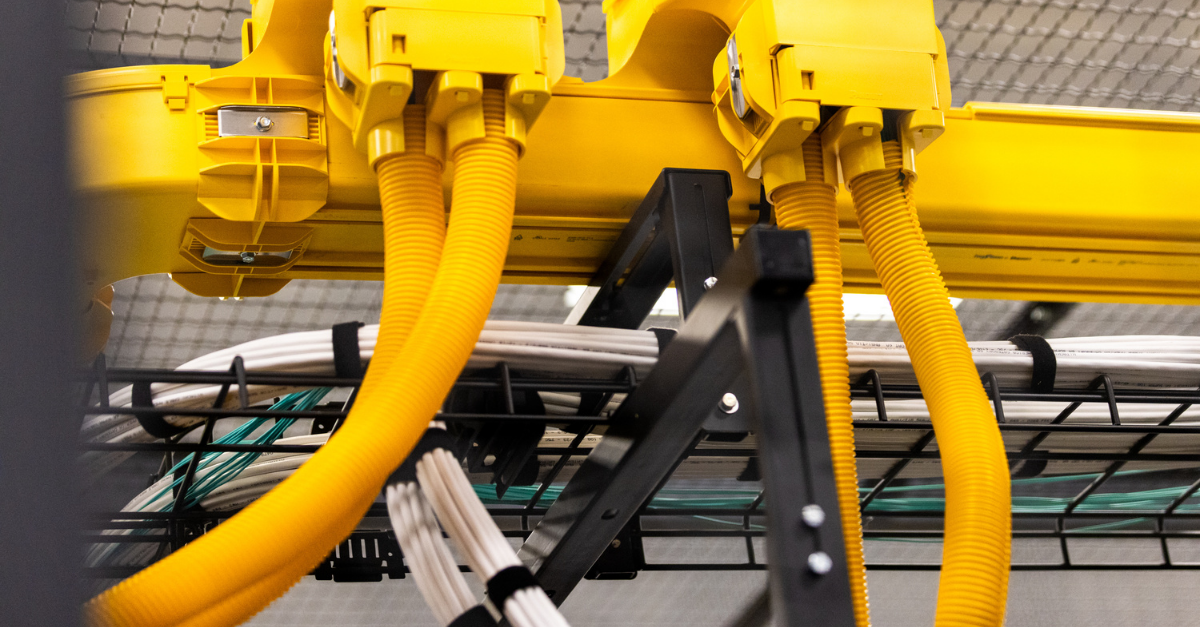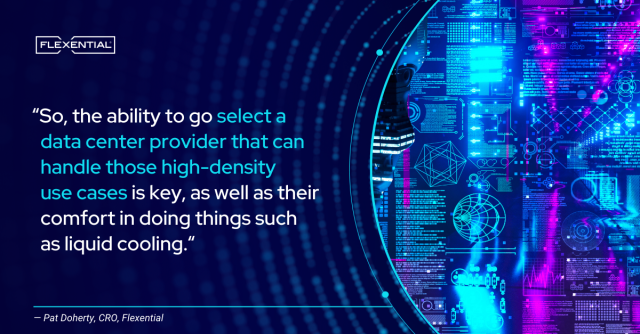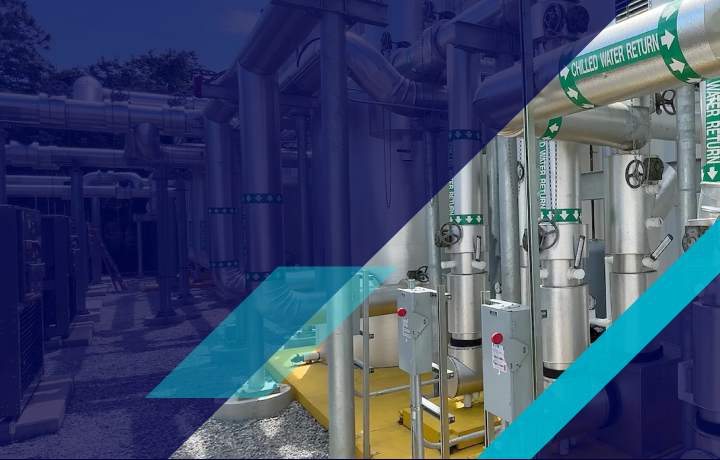AI data centers: The future of data center infrastructure
AI is transforming data centers to be more intelligent, efficient, and sustainable. This article explains how AI integration is reshaping data centers—to simultaneously provide and benefit from AI—and evolve to meet the growing demands of businesses worldwide.

Understanding the concept of artificial intelligence in data centers
Artificial intelligence in data centers refers to the utilization of AI technologies to enhance and automate operations. This encompasses a broad spectrum of applications, from environmental control systems managing cooling and heating to sophisticated algorithms optimizing server performance and predictive maintenance. AI's role in data centers is more than automation; it introduces smart, adaptive strategies that significantly boost operational efficiency and reliability, ensuring data centers can handle the increasing complexity and volume of data processing.
Relevance of AI in data center operations
AI's relevance in data center operations is multifaceted, addressing critical aspects such as operational cost reduction, energy efficiency, and downtime minimization. Moreover, AI facilitates the deployment of edge computing solutions in data halls, enabling faster, more reliable data processing closer to the source and reducing latency for critical applications.
Let's explore some of the most significant AI-driven innovations that are currently reshaping the data center industry landscape, as predicted by industry leaders like Gartner and outlined in our comprehensive Ebook, "Data Centers and the Impact of AI."
Power usage effectiveness (PUE) and water usage (WUE)
PUE is a metric that measures the total amount of power consumed by a data center divided by the amount of power used by the IT servers and equipment. A lower PUE score indicates that the data center is more efficient in its use of power. Additionally, by optimizing their water usage (WUE), organizations can reduce their environmental impact and improve their sustainability goals.
Cooling infrastructure
The cooling infrastructure of a data center is responsible for maintaining the desired temperature and humidity levels. By optimizing the cooling infrastructure, organizations can reduce their energy consumption and improve their sustainability goals. Liquid cooling re-emerges to handle this surge efficiently, reducing energy consumption and improving the performance of data center operations.
Data center design
The design of the data center can have a significant impact on its sustainability. By designing the data center to be energy efficient, organizations can reduce their environmental impact. Power rack density is pivotal. Supporting cabinets that require 80 – 100+kW is becoming standard. As data demands escalate, the need for more space and airflow and creative/efficient server arrangements grows.
Low latency solutions
In an increasingly connected world, the demand for low latency is paramount—and why data center interconnection is becoming such a key differentiator. AI aids data centers in providing real-time data processing by predicting traffic patterns and optimizing routing protocols. This results in faster data transfer rates, a speed that is essential for critical applications such as autonomous vehicles, telemedicine, and online gaming.
Connected and on the edge
AI facilitates the move toward edge computing, where data processing occurs closer to the data source. This decentralization improves response times and bandwidth usage, as supported by AI's predictive analytics and machine learning capabilities. By processing data on the edge, AI enables data centers to deliver content and services more efficiently.
For example, regionally located Philadelphia data centers are at the forefront of technological advancement, offering customers a range of advanced capabilities and services, including AI-driven solutions that enhance operations, automate tasks, and improve energy efficiency.
The evolution of AI in data centers
The journey of AI in data centers has evolved from rudimentary automation to the adoption of complex machine learning (ML) and neural networks that forecast, adapt, and proactively respond to fluctuating data demands and infrastructure health. This evolution highlights a strategic pivot towards building sustainable, efficient, and future-ready data infrastructures that are capable of self-management and real-time optimization.
A historical insight into AI in data centers
The concept of AI within data centers is not new but has been evolving over decades. Initially, data centers started with basic automated tasks, primarily for monitoring and managing the environment. Over time, as technology advanced, so did the role of AI. Early forms of AI helped streamline data storage and server management. However, it was the advent of machine learning and big data analytics that truly transformed data centers into AI-driven hubs. These technologies provided the ability to predict outages, optimize energy usage, and manage workloads dynamically, leading to more resilient and efficient operations.
Modern AI data centers: A futuristic view
Today's AI data centers are marvels of modern technology, characterized by self-managing and self-healing capabilities. They are not just repositories of information but intelligent systems capable of making real-time decisions. Advanced AI algorithms now manage everything from security protocols to energy consumption, ensuring data centers are more sustainable and efficient than ever before. The future of AI in data centers points towards even greater integration, where AI will not just support operations but will drive strategic business decisions, leveraging real-time data analytics to provide insights that can spur new avenues of business growth and innovation.
Benefits of artificial intelligence use in data centers
Integrating AI into data center operations offers manifold benefits:
- Operational efficiency: AI significantly enhances workload distribution, automates maintenance tasks, and ensures optimal resource utilization, leading to substantial cost savings and freeing up human resources for strategic projects.
- Predictive maintenance: AI's predictive capabilities foresee potential equipment failures, facilitating timely interventions that reduce downtime and extend the life span of critical infrastructure components.
- Energy efficiency: Through intelligent cooling systems and energy consumption optimization, AI substantially lowers the environmental impact of data centers, contributing to global sustainability efforts.
How to implement AI in data centers
To implement AI in data centers successfully, you need to assess the existing infrastructure, choose the right AI tools and platforms, ensure compatibility, train staff, and establish protocols for continuous learning and adaptation.
Key factors to consider
When considering the implementation of AI in data centers, it's essential to evaluate the scalability, compatibility, and flexibility of AI systems. Decision-makers must look at the data center's existing infrastructure, the compatibility of new AI tools with legacy storage systems, and the potential need for future expansion. Evaluating the data center's current and future needs helps in selecting an AI system that is both efficient and cost-effective.
Steps to integrate AI into data centers
Integrating AI into data centers typically follows a structured process:
- Assessment: Conduct a thorough analysis of current operations, infrastructure, and potential AI benefits.
- Planning: Develop a strategic plan that includes goals, timelines, and resource allocation for AI integration.
- Pilot testing: Begin with a pilot project to test AI solutions on a small scale before full deployment.
- Full integration: Expand the AI solutions across the entire data center operations, monitoring closely for performance and issues.
- Training and development: Invest in staff training and development to ensure that the team can manage and utilize AI tools effectively.
Understanding the role of hardware in AI implementation
The surge in HPC (High Performance Compute) demands a significant reengineering of data center infrastructure. Traditional data centers designed for CPU (Central Processing Unit) intensive tasks are now facing a challenge, as GPUs require more physical space, higher power for operation and cooling, and advanced cooling mechanisms to manage their increased heat output.
AI in data center software
Software, from operating systems to application-level solutions, plays a critical role in managing data flows, analyzing performance metrics, and ensuring security and compliance. Further, there are important data center compliance standards that must be considered.
Importance of software in AI data centers
Software is the driving force behind AI in data centers, enabling the various AI models and algorithms to run. It includes the entire stack, from the firmware, operating systems, and AI frameworks to the orchestration layers that manage resources and workload scheduling.
Different types of software used in AI data centers
AI data centers utilize a diverse range of software, including:
- Machine learning platforms: Tools like TensorFlow and PyTorch for developing and deploying AI models.
- Data analytics software: Solutions for processing and analyzing big data, like Apache, Hadoop, and Spark.
- Automation and orchestration tools: Systems like Kubernetes for container orchestration and Ansible for automation.
How AI improves data center software efficiency
AI enhances software efficiency by enabling predictive analytics for load balancing, automating routine maintenance tasks, and providing intelligent insights for decision-making, thus reducing the need for manual intervention, and increasing overall efficiency.
The future of AI in data centers
The future of AI in data centers is marked by continuous innovation, with emerging technologies like quantum computing and 5G connectivity poised to further enhance AI's capabilities. As we enter the mainstream wave of AI, enterprises are moving quickly to evaluate how AI can be used to accelerate business and reduce operational costs. The integration of AI will become more pervasive, driving not only operational efficiencies but also enabling data centers to play a crucial role in advancing AI research and development across various sectors.
Anticipated developments in AI data centers
The anticipation for future AI developments includes the integration of more advanced machine learning algorithms, enhanced natural language processing for automated customer service, and the adoption of AI for sustainable resource management. There are best practices for data centers that must be followed to ensure the safety and efficiency of infrastructure.
The role of AI in data center transformation
AI is set to transform data centers by enabling autonomous operations, real-time analytics for decision-making, and the facilitation of advanced services like Infrastructure as a Service (IaaS) and Platform as a Service (PaaS).
The impact on businesses and industries
AI's impact on businesses and industries is profound, with data centers becoming not only service providers but also innovation hubs, driving advancements in AI and offering competitive advantages through improved services and efficiencies.
Should you consider artificial intelligence when choosing a data center?
When selecting a data center, the incorporation of AI capabilities is a critical factor to consider. Data centers equipped with AI technologies, like those offered by Flexential, provide businesses with a competitive edge through enhanced efficiency, reliability, and scalability. These AI-driven data centers are better positioned to meet the dynamic demands of the digital economy.
As businesses contemplate their data center needs, evaluating a provider's AI capabilities should be paramount. AI-driven data centers not only promise increased benefits and improved operational efficiency and sustainability but also ensure that businesses can rapidly adapt to technological advancements and market demands.
Flexential and AI in our data centers
The integration of AI into data centers represents a pivotal shift towards more intelligent, efficient, and sustainable operations. As we look to the future, the role of AI in data centers will only grow, driven by the increasing demand for data processing and the need for businesses to remain competitive in a rapidly evolving digital landscape. For companies like Flexential, staying at the forefront of AI integration in data center operations is not just about enhancing operational efficiency; it's about shaping the future of technology and ensuring that businesses have the infrastructure they need to thrive in the digital age.
By embracing AI, data centers can transcend traditional limitations, paving the way for innovations that will define the next era of digital transformation. The journey towards AI-driven data centers is not without its challenges, but the potential rewards for businesses, society, and the environment make it a venture worth pursuing.
Want to learn more? Be sure to check out our webinar, “Data centers in the AI era: Emerging trends and strategies,” where our panel of experts reveals the evolving landscape of artificial intelligence and its enormous impact on data center technology and strategies.
“So, the ability to go select a data center provider that can handle those high-density use cases is key, as well as their comfort in doing things such as liquid cooling. […] We first introduced our Generation 4 data centers back in 2010, and one of the hallmarks of those data centers was the ability to be able to handle high-density use cases. […] So, we feel like we've had lots of repetition, lots of use cases, and a number of customers that can validate our capabilities in this space.
— Pat Doherty, CRO, Flexential







